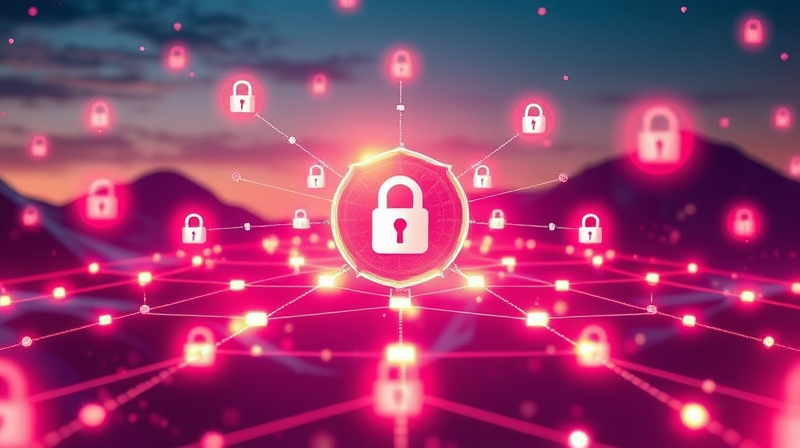In today's digital world, keeping your online presence safe is more crucial than ever. With ever-evolving digital threats, anyone can benefit from a few practical adjustments to their online behavior. The following steps are designed to help you secure your internet experience, giving you peace of mind and improved cyber safety. By taking control of your digital habits, you not only protect your personal data but also contribute to a safer digital community.
Every interaction online leaves a digital footprint, and with this footprint comes vulnerability. Strong security measures are key to reducing risks, from financial breaches to privacy invasions. The steps outlined below empower you with proactive methods to guard against a wide array of cyber threats. Let's explore these diverse measures that, when combined, create a robust barrier between you and potential cyber criminals.
The Essentials of Cyber Hygiene
A secure internet experience begins with understanding the importance of cyber hygiene. Think of these steps as part of your everyday routine, similar to brushing your teeth or locking your door at night. Each step contributes to a greater overall security posture, ensuring that your digital life remains protected despite the sophisticated methods of hackers.
Step One: Use Strong, Unique Passwords
- Create passwords that use a mix of uppercase and lowercase letters, numbers, and special characters.
- Avoid using the same password across different accounts, so if one is compromised, the others remain safe.
- Consider using a trusted password manager that not only generates strong passwords for you but also stores them securely.
Unique and strong passwords are the foundation of your security strategy. They are the first line of defense in keeping your accounts out of reach from unauthorized entities.
Step Two: Enable Multi-Factor Authentication (MFA)
- MFA adds an extra layer of protection by requiring additional verification beyond just your password, often in the form of a code sent to your phone or email.
- Enabling MFA on your financial accounts, social media profiles, and email can significantly decrease the likelihood of unauthorized access.
- This method is particularly important as cyber attacks become more targeted and sophisticated.
Implementing MFA is a simple yet effective way to enhance your security.
Step Three: Keep All Software Updated
- Regularly updating your operating system, applications, browsers, and antivirus software is crucial for patching vulnerabilities and warding off exploits.
- Automatic updates ensure that your device is always equipped with the latest defenses against emerging threats.
- Staying current with updates is one of the easiest ways to bolster your digital defenses.
Ensuring that your software is up-to-date is essential for maintaining a resilient security posture in an interconnected digital environment.
Step Four: Protect Your Devices with Security Software
- Invest in reputable security software, including antivirus, anti-spyware, and anti-malware programs, for all your devices.
- Regular scans and updates to your security software help in identifying and neutralizing threats before they compromise your system.
- Consider scheduled scans to keep your system in check continuously.
Your devices are your gateway to the digital world, and securing them is paramount to ensuring your overall safety on the internet.
Step Five: Secure Your Network
- Set up your WiFi network with the latest encryption protocols, such as WPA3, to protect your data from unauthorized users.
- Changing your router’s default passwords and keeping them confidential prevents easy exploitation by hackers.
- Using a firewall helps monitor and filter both incoming and outgoing network traffic, adding an extra shield around your network.
Your home network can be a vulnerable gateway if not properly managed. By securing your network, you ensure your data and devices are safe from external intrusions.
Step Six: Be Cautious in Online Interactions
- Always be cautious when interacting with unknown contacts online. Avoid sharing sensitive personal or financial details.
- Remain skeptical of unsolicited messages, as they can lead to phishing schemes or scams.
- Take time to verify the identity of individuals who request sensitive information or login credentials.
This caution extends to every online interaction. In a world filled with cyber threats, vigilance is one of your most dependable allies.
Step Seven: Practice Safe Browsing
- Whenever possible, visit only websites that use secure protocols (HTTPS), ensuring that your communication is encrypted.
- Avoid downloading content or clicking on pop-ups from unverified sources, as they can harbor malicious software.
- Regularly clear your browsing history and cache to reduce your tracking footprint on the internet.
Safe browsing habits protect you from inadvertently encountering harmful sites and facilitate a more secure digital environment.
Step Eight: Backup Your Data
- Adopt the 3-2-1 backup rule: maintain three copies of your data, stored on at least two different types of media, with one copy stored offsite.
- Regularly test your backups to ensure that they can be restored quickly in the event of a data loss incident.
- A robust backup strategy safeguards you against data loss caused by cyber attacks or accidental deletions.
Having reliable backups ensures that you can recover vital information if your system ever becomes compromised.
Step Nine: Regularly Monitor Your Accounts
- Keep an eye on your financial statements and digital accounts for any signs of unusual activity.
- Set up account alerts to receive immediate notifications for potentially suspicious or unauthorized transactions.
- Taking these proactive measures means you can act swiftly to mitigate any potential damage.
Monitoring your accounts consistently helps you catch security breaches early and reinforces your overall internet safety strategy.
Step Ten: Stay Educated and Informed
- Cybersecurity is a constantly changing field. Staying informed about new threats, scams, and best practices is essential.
- Participate in cyber safety trainings and follow updates from trusted sources to remain one step ahead of potential attackers.
- The more you know, the better prepared you will be to handle any emerging threats.
Knowledge is power in the digital age. By keeping yourself updated on the latest trends in cybersecurity, you can continually refine your defenses and reduce vulnerabilities.
Implementing these steps can seem daunting at first, but remember that each small change adds to a stronger, collective defense. Through a combination of strong passwords, vigilant online behavior, regular updates, and constant education, you build a fortress that is far more difficult for cyber criminals to breach.
The journey toward digital safety requires persistence and commitment, but the rewards are immense. By making cybersecurity a regular part of your routine, you not only protect your own data but also contribute to a safer overall internet environment.
As you adopt these practices, empower yourself with confidence in your digital interactions. A safer internet is not the result of a single action but a series of thoughtful, well-executed steps. Take charge of your online security today and inspire those around you to do the same.
Remember, every action you take in enhancing your digital safety, whether big or small, plays a crucial role in building a robust online community. Stay vigilant, stay secure, and let your informed actions light the way toward a safer digital world.








